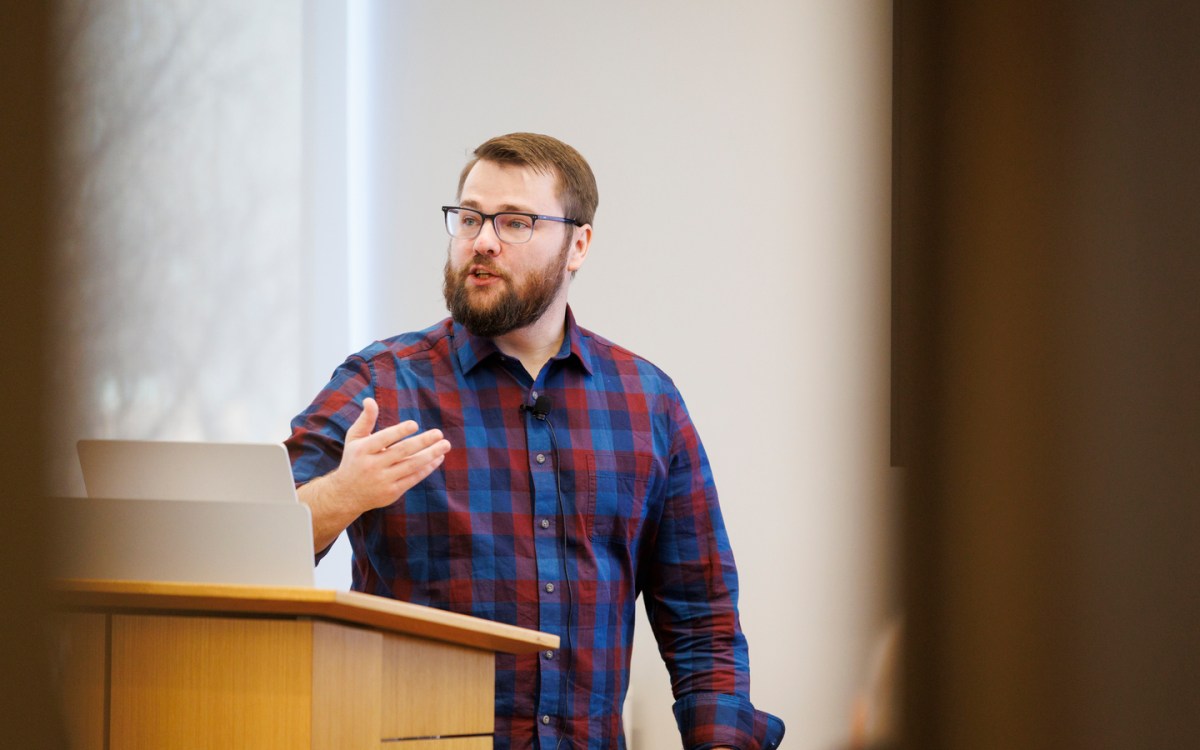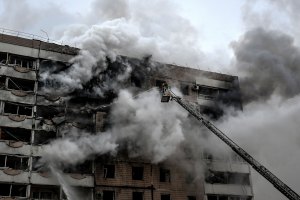JFK and the Cuban missile crisis — a new assessment
The Cuban missile crisis of October 1962 has been called the “single most serious moment in human history.” During the 40 years of the Cold War, it was the closest the United States and the Soviet Union ever came to nuclear war.
On the 45th anniversary of the crisis last week, Theodore Sorensen, special counsel and adviser to President John F. Kennedy, returned to Harvard to relive that moment at the Kennedy School’s JFK Jr. Forum.
The crisis arose when the United States Central Intelligence Agency (CIA) determined, on the basis of aerial surveillance photos, that the Soviets were installing nuclear missiles in Cuba.
It was a provocation to which President Kennedy had to respond — but not so forcefully as to provoke a Soviet attack on the United States or its allies.
The emergency was resolved peacefully after Kennedy ordered a naval “quarantine” of Cuba — a blockade under a less bellicose name — and then made a deal with Soviet Premier Nikita Khrushchev: Soviet missiles out of Cuba and U.S. nuclear missiles out of Italy and Turkey.
Sorenson’s interlocutors at the forum last Wednesday (Oct. 17) were Graham Allison, director of the Belfer Center for Science and International Affairs and the author of a book on the crisis, and James Leach, director of Harvard’s Institute of Politics.
Details of the deal that resolved the standoff were initially kept quiet; U.S. missiles were pulled out of Turkey some months after the crisis of October, and under protective cover of NATO. Sorenson noted that Kennedy simply assured Soviet Ambassador Anatoly Dobrynin “that those missiles would be gone.”
This and other information about the deal that has come out over time has shown it to have been more of a quid pro quo than initially acknowledged. Leach noted that the secrecy of the deal was not exactly in keeping with the ideal of “open covenants, openly arrived at.” He asked Sorensen about “the chemistry of the times” and why the administration opted for secrecy.”
Sorensen responded in terms of the Cold War concept of deterrence. “Our allies … clearly depended not only on the power and the might of the United States but on our willingness to use it.
“The saying at that time was that Americans must be willing to sacrifice their cities in order to deter a Soviet attack on European cities. They had to trust us, that we would not back down.”
But when the Soviets demanded the removal of the U.S. missiles from Turkey as a quid pro quo for the removal of missiles from Cuba, “we had to make a difficult choice,” Sorensen said. “As President Kennedy said, history would regard that as a rather reasonable offer on [Khrushchev’s] part.”
On the other hand, “If the U.S. undermined NATO, and specifically Turkey, by removing those missiles … who would ever believe in the United States, that we would be willing to risk our cities?”
Kennedy had long felt the Jupiter missiles in Turkey and Italy were obsolete anyway, according to Sorensen, and their deterrent function was soon taken over — more effectively — by the Polaris nuclear submarine.
Historians today are divided on whether the peaceful resolution of the Cuban missile crisis was due to luck or skilled statecraft on Kennedy’s part. Sorensen holds forthrightly to the latter view.
Introducing the conversation, the Belfer Center’s Allison remarked, “Many people here were not born or were not conscious during the Cuban missile crisis.” He told of encountering a Harvard student the day before who wasn’t clear whether the missile crisis had occurred before or after World War II.
But if the crisis has faded over time from the consciousness of the larger public, time has given scholars an even fuller appreciation of how grave the danger was.
In hindsight, historians put the odds for war at between one in three and even odds, with fatalities estimated at 100 million.
Since the end of the Cold War there have been regular reunions of participants on both sides of the crisis, including Sorenson and former Secretary of Defense Robert S. McNamara and their surviving Russian counterparts.
Among the revelations to come out of these reunions were that the Soviets had deployed nine tactical missiles in Cuba to be used against any U.S. invasion force, and that the Soviet field commanders had the authority to fire those tactical nuclear weapons without further direction from the Kremlin.
Most of Kennedy’s advisers had pushed him to bomb the missile sites and then launch an invasion, said Sorensen, remembering their counsel as: “‘Go in there and take Cuba away from Castro.’”
But in an era when “mutual assured destruction” — MAD — was a given of security policy on both sides, an American attack would have brought on a Soviet counterattack, which would have led to retaliation by the Americans.
“We would have continued that escalation until there was nothing left of either country.”




